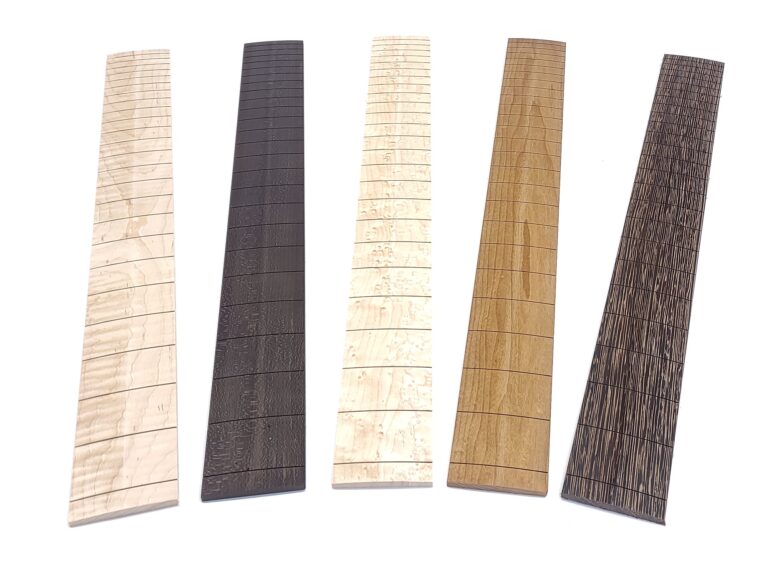Welcome, fellow enthusiasts of the six-stringed wonder! Today, we embark on a captivating journey into the heart of guitar craftsmanship, where every curve and contour of the fretboard radiates its unique charm. Join me as we delve into the fascinating realm of guitar fretboard radii, unraveling the technical intricacies that shape the melodic landscape of our musical endeavors.
Imagine the fretboard as a canvas, where each note is a stroke of genius, and each fret is a milestone in our musical odyssey. The radius of a guitar fretboard refers to the curvature of its surface, akin to the arc of a circle. This seemingly subtle feature plays a pivotal role in determining the playability, comfort, and sonic character of the instrument.

Let us begin our exploration by understanding the significance of fretboard radii. Picture yourself caressing the strings, navigating effortlessly from chord to chord, and embarking on soul-stirring solos. The radius of the fretboard greatly influences these experiences, offering a spectrum of possibilities to cater to diverse playing styles and preferences.
Traditional guitars often feature a fretboard with a flat or nearly flat radius, typically around 12 inches. This configuration offers a balanced blend of comfort and versatility, catering to a wide range of playing techniques, from intricate fingerpicking to blazing fast shredding. The flat fretboard radius provides a uniform playing surface, facilitating smooth string bending and precise fretting across the entire span of the neck.
However, as our musical aspirations evolve, so do our cravings for new sonic landscapes. Enter the realm of compound radius fretboards, where innovation meets ingenuity. A compound radius fretboard boasts a gradual transition from a flatter radius near the nut to a more pronounced curvature towards the higher frets. This ingenious design marries the best of both worlds, offering the comfort of a flat radius for chordal playing and the agility of a tighter radius for effortless lead work.
Imagine the sensation of gliding effortlessly across the frets, seamlessly transitioning between rhythm and lead passages with unparalleled fluidity. The compound radius fretboard empowers players to explore new horizons, unleashing their creativity with newfound precision and expressiveness.
But our quest for sonic perfection knows no bounds, and thus, we venture deeper into the realm of innovation. Enter the world of multi-scale fretboards, where symmetry gives way to asymmetry, and tradition yields to evolution. In a multi-scale fretboard, the frets are angled diagonally, with each string boasting a slightly different scale length.
At first glance, the multi-scale fretboard may appear daunting, its unconventional aesthetics challenging our preconceived notions of guitar design. Yet, beneath its asymmetrical facade lies a world of sonic possibilities waiting to be explored. The varying scale lengths optimize string tension and intonation, ensuring impeccable clarity and resonance across every note and chord.
As we conclude our journey into the realm of guitar fretboard radii, let us reflect on the profound impact of this seemingly modest feature. From the humble flat radius to the innovative multi-scale design, each configuration offers a unique sonic palette for players to channel their creativity and expressiveness.
So, whether you find solace in the familiarity of a traditional fretboard or seek inspiration in the avant-garde realm of innovation, remember this: the journey of musical discovery knows no bounds, and the fretboard is but a canvas upon which we paint our melodic masterpieces. Embrace the curvature, savor the nuances, and let your fingers dance across the frets, for in the realm of guitar fretboard radii, the melody knows no limits.
- Flat Radius (e.g., 12 inches):
- The flat radius is a classic choice found on many traditional guitars.
- Technical Detail: Offers a uniform curvature across the fretboard, facilitating consistent string bending and fretting.
- Compound Radius (e.g., 10-16 inches):
- Combines elements of both flat and curved radii, with a flatter radius near the nut transitioning to a more pronounced curvature towards the higher frets.
- Technical Detail: Provides the comfort of a flat radius for chordal playing and the agility of a tighter radius for lead work.
- Vintage Radius (e.g., 7.25 inches):
- Often associated with vintage-style guitars, featuring a more pronounced curvature reminiscent of instruments from the golden era of guitar craftsmanship.
- Technical Detail: Offers a distinctive feel and playability, ideal for blues, jazz, and classic rock styles.
- Modern Radius (e.g., 9-14 inches):
- Embraced by contemporary guitarists seeking enhanced playability and versatility.
- Technical Detail: Strikes a balance between vintage charm and modern performance, catering to a wide range of playing styles.
- Compound Modern Radius (e.g., 9.5-14 inches):
- A hybrid design that combines the ergonomic benefits of a compound radius with the contemporary feel of a modern radius.
- Technical Detail: Delivers enhanced comfort and playability across the entire fretboard, accommodating both rhythm and lead playing with ease.
- Vintage Compound Radius (e.g., 7.25-12 inches):
- Melds the vintage aesthetic of a classic radius with the ergonomic advantages of a compound radius.
- Technical Detail: Retains the nostalgic feel of vintage instruments while offering improved fretting and bending capabilities.
- Multi-Scale (Fan Fret) Radius:
- Features an asymmetrical design with varying scale lengths for each string, optimizing intonation and string tension.
- Technical Detail: Enhances clarity and resonance across the fretboard, particularly beneficial for extended-range guitars and alternate tunings.
- True Temperament Fretboard:
- Utilizes a patented fretting system with individually adjusted frets to achieve perfect intonation.
- Technical Detail: Eliminates the inherent intonation challenges of traditional fretted instruments, ensuring precise tuning and harmonious chord voicings.

